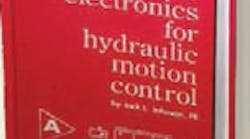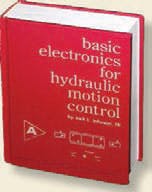Using motion controllers for speed control, part 7
Editor's note: This is the final installment in a seven-part series on digital resolution and other subjects. Read the rest now: Part 1, Part 2, Part 3, Part 4, Part 5, and Part 6.
Once you’ve chosen the type of sensor to use for generating a feedback signal representative of speed, the next challenge becomes how to manage the signal for closed-loop speed control. A dedicated microprocessor control may be used in specialized cases, but a well-chosen electronic motion controller offers the quick response and high performance needed to close a speed control loop, but also the flexibility and functionality to aid setup and tuning.
Electronic motion controllers in the context used here are special purpose digital computers that have been optimized to perform the control and coordination of one or more axes of output actuators. In general, the actuators could be electrical, hydraulic, or pneumatic. However, this discussion will be limited to control of hydraulic systems.
However, the basic logic needed to control any mechanical machine motion is independent of the actuation medium. It is only that the output stage may be specialized for, say, a driver amplifier for a servovalve instead of for a stepper motor. And to some extent, the sensors and other feedback elements may be unique to the medium (say, a pressure sensor instead of a current sensor).
Optimization for the control of machine motion also means that even though their basic control is digital, motion controllers are designed to provide the processing speed necessary for essentially continuous control of feedback axes.
The need for speed
The critical parameter in the motion controller time factor is the servo loop update time. For most electrohydraulic servo systems, an update time no longer than 2 or 3 msec is required. In very high-speed axes, it may be necessary to have update times as short as 500 μsec. As processors become faster and faster, of course, it becomes easier for them to meet more demanding servoloop update times. However, 2 to 3 msec is probably a good rule of thumb for most applications. The update time should be looked at a bit more closely.
Being a digital device, the processor can do only one thing at a time, such as sample the feedback transducer. After sampling the feedback signal, the processor calculates the error by comparing the feedback signal to the command signal, then calculates the output to the servovalve according to some control algorithm. It then issues an output signal to the servovalve, then goes back again to sample the feedback signal. It goes through this loop again, and again, thousands of times per second.
This divided attention of the processor is said to form a sampled data control system, because the computer is just sampling all of its various elements at various times in the control cycle. If the time becomes too great between the instant when the computer samples the feedback signal and when it ultimately gets around to generating the command signal to the valve, it will not be able to make the servoloop stable and yet be responsive. To the uninitiated, a few thousandths of a second my not seem important, but a little analysis can reveal otherwise.
For example, let’s assume the highest output frequency of a servo axis is 60 Hz, which corresponds to a period of 16.7 msec. Let’s also assume the controller has an update time of 3 msec. This means the highest frequency will be sampled only about five times each cycle. This may not be enough to achieve the required degree of control, so a faster processor may be required — one with perhaps a 300-μsec update time. This sampling rate would provide more than 50 samples per cycle, and machine control will improve commensurately.
Versatility of motion controllers
Large OEMs, especially manufacturers of mobile equipment, design and build their own special-purpose motion controllers as a part of their general computerized control of the vehicle and its subsystems. On the other hand, a growing number of general- purpose motion controllers are commercially available that come in a variety of configurations and with an equal variety of options. They have three very basic architectures:
• stand-alone units that include a processor and mother board, peripheral chip sets, power supply, keyboards, and ports for monitors, printers, and networking,
• plug-in cards for insertion into one of the standard expansion bus slots on a personal computer, and
• plug-in cards for insertion into one of the standard PLC type expansion slots on a hosting PLC.
Software is what makes the system elements work together. Some motion controllers have their own proprietary programming language, but there are no universal motion control programming languages. In fact, many motion controller manufacturers have different languages for different models of controllers. In the plug-in types for personal computers, many of the designs can be programmed in general-purpose languages, such as Basic, Fortran, or C.
Scores of factors must be considered in the selection of a suitable motion controller. The checklist provided in this article contains some of those factors. The list can be useful for both self-education to the technology of digital motion controllers as well as a basic guide in selection of them.
Considerations when selecting a motion controllerInstallation factors
Inputs supported
Outputs supported
Response times
Programming
External communications (input and output)
Electromagnetic compatibility Environmental factors and packaging
Engineering/Design support
Power requirements |
Basic Electronics for Hydraulic Motion Control
This is where your basic electronic training starts. This book, unlike many others, is written specifically by a practitioner of the hydraulic art for engineers and technicians working in hydraulics, but it teaches you all you ever needed to know about electronics. Your personal understanding of hydraulics is your ticket to learning electronics with this book, which is filled with analogies to simplify the understanding of concepts.
Everything you wondered about and need is here: transducers, interfaces, signal conditioners, pulse width modulation, controllers, amplifiers, transistors, analog electronics, digital electronics, and much, much more. It is a must read and reference for anyone interested in certification in the exploding technology of electrohydraulics.
It uses your knowledge of fluid power to help you learn and understand electronics. Order your copy now and get the book that makes electronics fun and easy to learn.
Authored by Jack L. Johnson, P.E., edited by Hydraulics & Pneumatics, and published by Penton Media. The hard cover textbook (ISBN 0-932905-07-2) contains 438 pages and sells for $99.00, plus shipping and sales tax. Click here for more information on this and other books.


